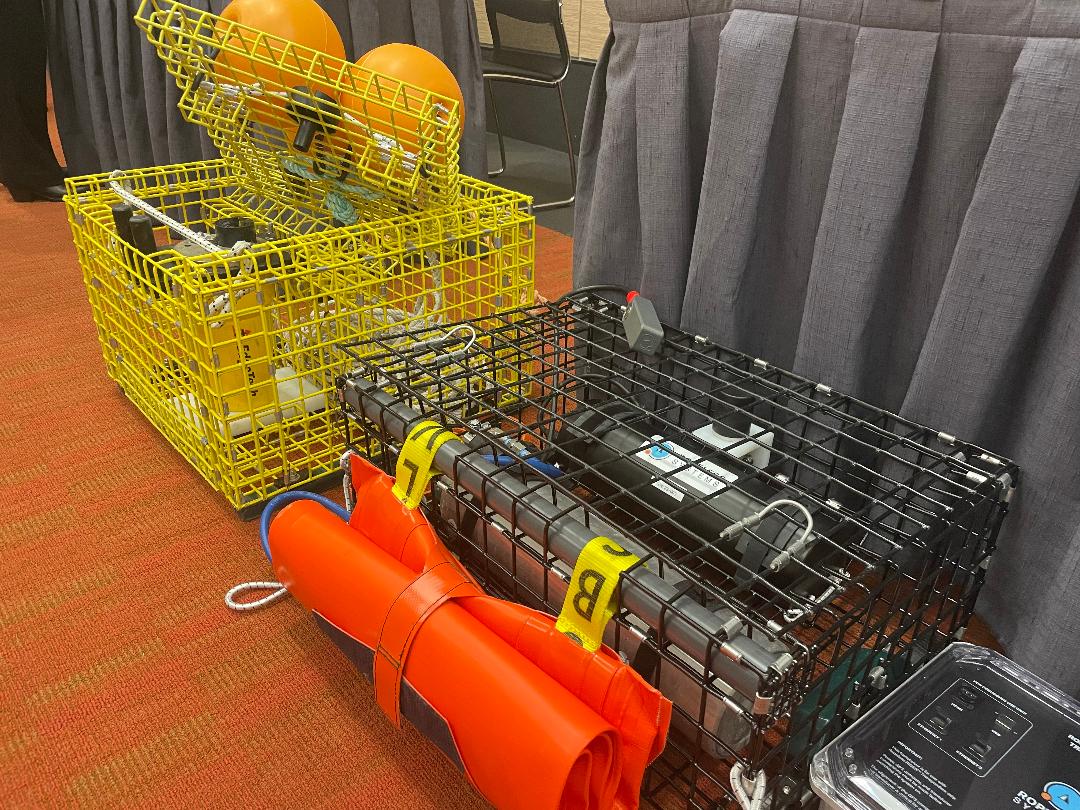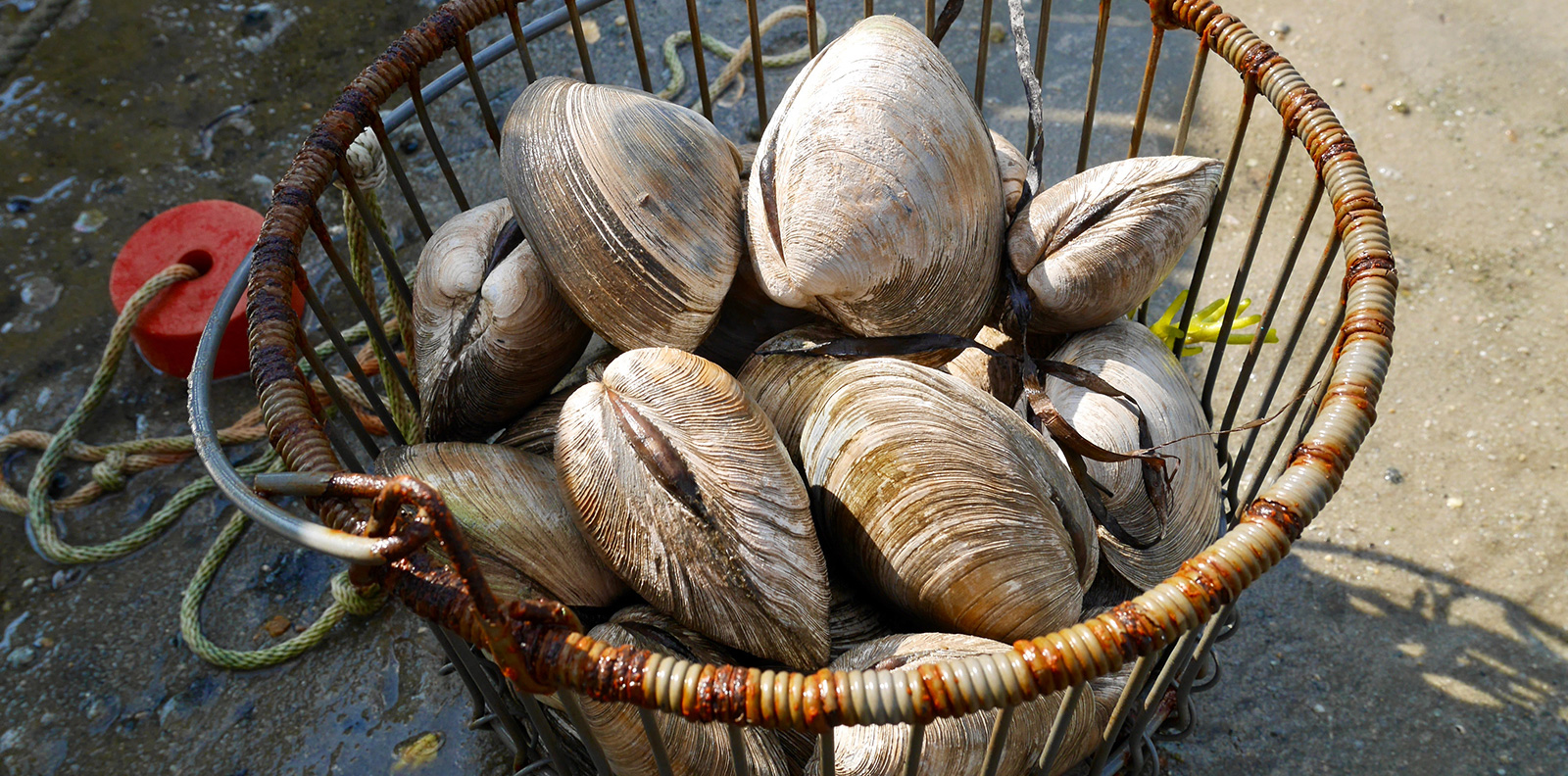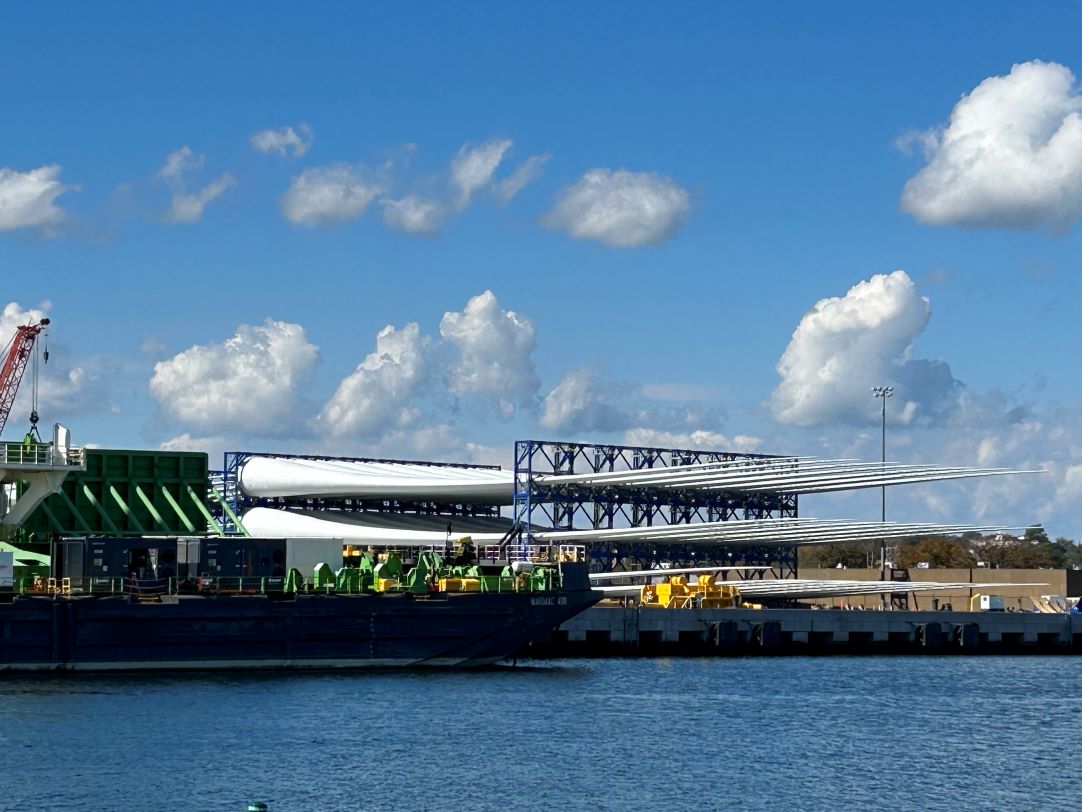Study Commission Hears Testimony About Ocean State’s Disappearing Quahogs
November 6, 2023
PROVIDENCE — An autumn afternoon in a Smith Hill committee room isn’t the usual habitat for a small group of quahoggers. The cloistered halls of the Statehouse are a far cry from the open waters and shorelines of Narragansett Bay, but for the four shellfishermen chosen to serve on a joint legislative study commission, it could mean their livelihood.
Their chief product is a literal state symbol: the northern quahog, also called hard clams. With their iconic shape and brown or gray concentric rings lining the outside of their shells, they are instantly recognizable to most Rhode Islanders. They are featured in the state’s popular “stuffies.” They are seen as the backbone of the state’s seafood industry and Rhode Island’s blue economy, to the point where earlier this year, state officials installed giant stuffies in airports across the nation as part of an advertising campaign.
But quahoggers working Narragansett Bay today are catching less than half the total amount of quahogs they were a decade ago. What once was a thriving trade in the 1980s, supporting thousands of shellfishermen and their families, has now dwindled to the point where less than 200 commercial quahoggers work the bay.
That’s because the state symbol seems to be vanishing from local waters. Last year quahoggers harvested 397,442 pounds of quahog meat, according to data from the National Oceanic and Atmospheric Administration. That’s less than half of what they caught 10 years ago: in 2012, Ocean State quahoggers harvested more than 900,000 pounds of meat.
State lawmakers are now getting involved. At the end of the last legislative session, they created a joint study commission to investigate what is happening to Narragansett Bay’s quahog population.
At a study commission meeting late last month, commission member Jim Boyd, a longtime shellfisherman, told representatives from the Department of Environmental Management what quahogging used to be like in the bay.
“Back in the ’80s, we would work off the high banks and catch six bags of necks in a day,” Boyd said. “I mean regularly. Today, you’d be lucky to fill a five-gallon pail.”
Michael McGiveney, another longtime shellfisherman and president of the Rhode Island Shellfisherman’s Association, emphasized the connection between clams and the folks who catch them.
“Where I counted on the bay this morning — Rocky Point, Ohio Ledge, and Longmeadow — there were 12 guys,” McGiveney said. “I worked in Barrington Beach, there were seven, that’s 19 guys … there aren’t enough clams for the guys to catch; we are the survivors.”
According to shellfishermen like Boyd and McGiveney, wild quahogs have all but vanished from the lower bay area, with the bulk of the population clustered now in Greenwich Bay, upper Narragansett Bay, and the lower Providence River, which was only open to shellfishing in 2021. The river has become a big part of shellfishing despite only being recently opened. According to DEM data, in 2022 the lower Providence River was responsible for 60% of all quahog landings in the state.
The clams’ clustering is backed up by DEM data. A 2016 study by the agency examined where and when quahog larval spawned and showed overwhelming concentrations of quahogs spawning in Greenwich Bay and upper bay areas, and relatively few in waters south of Prudence Island. Data from DEM for 2020 shows that areas closed or prohibited to fishing are significant sources of quahog larvae throughout the bay.
Like most organisms, quahogs go where the food is. As bivalve filter feeders, they pump water through their bodies, filtering their favorite food: microscopic plants called phytoplankton. The amount of phytoplankton in the bay at any given time, meanwhile, depends on how much nitrogen and other nutrients are in the water.
For a long time, Narragansett Bay had elevated levels of nitrogen in its waters, primarily from the 11 wastewater treatment facilities that piped effluent into the bay. While that might be good for phytoplankton, excessive nitrogen loading lowers dissolved oxygen levels and causes fish kills. DEM estimates the 2003 Greenwich Bay fish kill impacted more than a million menhaden in the bay.
“The concern is that excess discharges of nitrogen fuels the phytoplankton to an excessive level which will result in lower dissolved oxygen,” said Joe Haberek, DEM’s administrator of surface water protection. “But excess nitrogen can also have impacts on decreased water clarity, blocking the sunlight, and submerged aquatic plants can also have toxicity impacts.”
Since the early 2000s, wastewater treatment facilities around the bay have reduced the total amount of nitrogen piped into the bay by more than 50%. As a result, Narragansett Bay is cleaner than it has been in more than a century.
But quahoggers say the bay is too clean, and it’s greatly impacting the amount of wild quahogs and their bottom line. Their preferred solution is to inject greater amounts of nitrogen in the bay to increase the amount of phytoplankton for quahogs to eat.
“What I’m understanding now is there’s been a nitrogen reduction in the bay that’s caused plankton and phytoplankton to be reduced because they don’t have the food for themselves,” McGiveney said. “If we don’t have clams, we don’t have fish, we don’t have men to catch them.”
But the actual answer is a lot more murky. Conor McManus, head of DEM’s fisheries division, told the study commission that Rhode Island isn’t alone in seeing reduced quahog landings. Fisheries up and down the East Coast are reporting declining landings over the past 10 years.
“Much of the discussion among scientists, managers, and stakeholders is trying to make sure these resources last for years to come,” McManus said. “Connecticut, New York, New Jersey, they’ve also seen declines in quahog landings as well as other fish like bass, scallops, oysters, and soft-shell clams.”
Haberek cautioned the commission against laying the blame on a single environmental factor, indicating other factors may be impacting quahogs.
“I was around roughly 10 years ago, the same argument was being made for the lobster fishery,” Haberek told the commission. “There was concern about nitrogen reductions, and a variety of things. I think people now recognize that it’s more complex than just food being present or not present.
“If we had a room that had all the food we could inherit and we could all eat it, but there was no oxygen in the room, that doesn’t mean we’re all going to survive. There’s more than one variable other than just the amount of food that equates to survivability.”
The commission has until May 31 to report its findings to the General Assembly. Its next scheduled meeting is Nov. 15 at 3 p.m. in the Senate Lounge at the Statehouse.




The daily harvest possession limits are based upon a total volume rather than total number of clams harvested. As the 1 inch hinge-width (littleneck) is the most valuable, many clams are harvested after spawning only one time (or not at all). I takes a lot more littlenecks to add up to a bushel than the larger size classes of quahogs. Harvest opportunities in the Providence River are reducing the number and density of spawning quahogs (previously unfished). These examples are far more likely reducing the numbers of quahogs throughout the bay when compared to “water that’s TOO clean”.
Water that’s too clean? I’d put my money on overfishing! When are we going to start realizing that “everyone” does “everything”these days? Squid will be next then who knows what, maybe mushrooms. Gone are the days when a small number of enthusiasts pursued, caught, and gathered this or that. Now a days everybody is an expert and sharing the “knowledge” and abilities on the internet in the attempt to become an influencer, get likes, or monetize their incredible abilities.